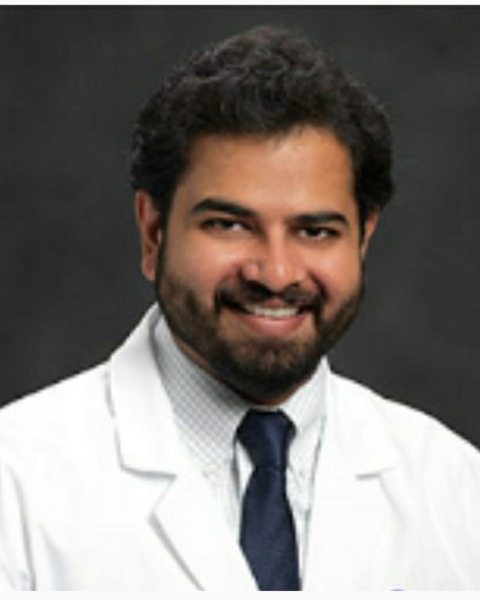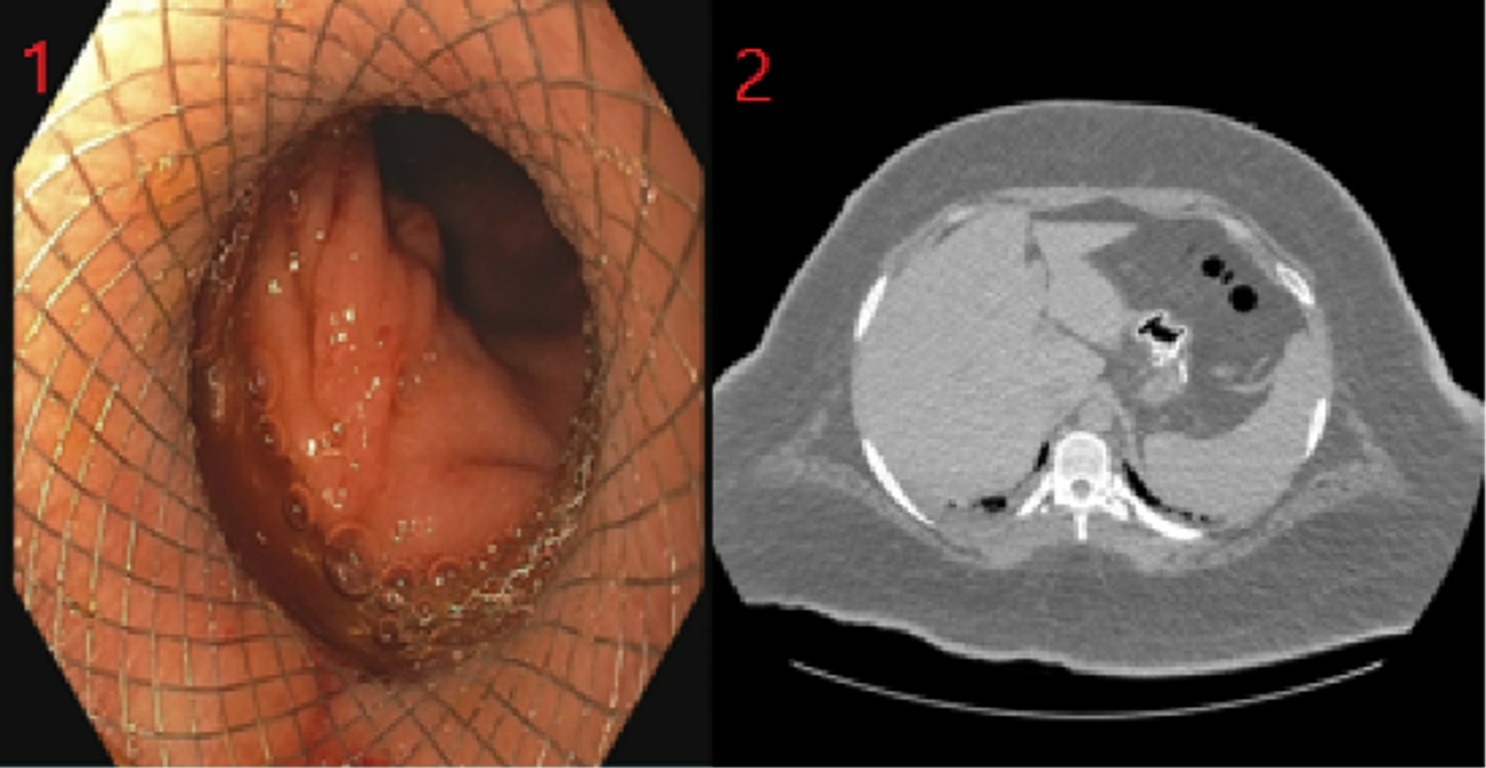Back


Poster Session A - Sunday Afternoon
Category: Stomach
A0698 - Lumen Apposing Metal Stent for Sleeve Gastrectomy Surgical Site Stricture
Sunday, October 23, 2022
5:00 PM – 7:00 PM ET
Location: Crown Ballroom

Has Audio

Praneeth Kudaravalli, MD
Augusta University Medical Center
Augusta, GA
Presenting Author(s)
Praneeth Kudaravalli, MD1, John Erikson L. Yap, MD2, Kwabena O. Adu-Gyamfi, MBChB3, Dariush Shahsavari, MD3, Aaron Bolduc, MD4, Renee Hilton, MD4, Subbaramiah Sridhar, MBBS, MPH5
1Augusta University Medical Center, Augusta, GA; 2Augusta University Medical College of Georiga, Augusta, GA; 3Medical College of Georgia - Augusta University, Augusta, GA; 4Augusta University, Augusta, GA; 5Medical College of Georgia, Augusta, GA
Introduction: The obesity pandemic has continuously increased yearly and more patients are seeking both medical and surgical treatments. Sleeve gastrectomy accounts for 60% of bariatric surgeries in the US. Stricture formation occurs in approximately 0.5% of cases and usually occurs at the incisura. Unfortunately, given the current insurance coverage in the US, some patients opt to travel overseas to obtain cheaper bariatric surgeries with limited quality assurance, no follow-ups and possible higher rates of complication. The use of Lumen Apposing Metal Stents (LAMS) for benign strictures are expanding and has been used in post Roux-en-Y gastric bypass (RYGB) strictures.
Case Description/Methods: We present a 29-year-old female who underwent a laparoscopic sleeve gastrectomy for Class 3 obesity. The surgery was performed overseas due to insurance coverage issues in the US. She was seen for intractable nausea and vomiting. She had an EGD performed which identified a tight 10-12mm long angulated stricture at 42cm from the incisors requiring balloon dilatations to 20mm on two occasions with no resolution of symptoms. After a multidisciplinary discussion with Bariatric Surgery, a plan was made to place a stent at the angulated stricture area as a bridge therapy while awaiting insurance approval for a definitive surgical intervention. In view of the short length of the angulated stricture, a 20mm wide X 10mm long fully covered LAMS (Figure 1) was successfully deployed. A subsequent CT scan of the abdomen with oral contrast (Figure 2) showed that the stent in the appropriate position with no evidence of obstruction. The oral contrast passed through the stent beyond the angulated stricture. The patient however, had no improvement of symptoms and only tolerated some clear liquids. Given persistence of symptoms, the LAMS was successfully removed intact for an emergent laparoscopic RYGB reconstruction.
Discussion: Treatment of post- sleeve gastrectomy stricture is primarily endoscopic balloon dilation but this unfortunately requires repeat endoscopic procedures. If the endoscopic therapy fails, conversion to RYGB may be required. Our case provides the first reported use of a 20mm wide LAMS as a bridge therapy for managing short surgical site stricture after a sleeve gastrectomy. More studies are needed to evaluate the effectiveness of LAMS in the management of short strictures related to gastric sleeve surgery.

Disclosures:
Praneeth Kudaravalli, MD1, John Erikson L. Yap, MD2, Kwabena O. Adu-Gyamfi, MBChB3, Dariush Shahsavari, MD3, Aaron Bolduc, MD4, Renee Hilton, MD4, Subbaramiah Sridhar, MBBS, MPH5. A0698 - Lumen Apposing Metal Stent for Sleeve Gastrectomy Surgical Site Stricture, ACG 2022 Annual Scientific Meeting Abstracts. Charlotte, NC: American College of Gastroenterology.
1Augusta University Medical Center, Augusta, GA; 2Augusta University Medical College of Georiga, Augusta, GA; 3Medical College of Georgia - Augusta University, Augusta, GA; 4Augusta University, Augusta, GA; 5Medical College of Georgia, Augusta, GA
Introduction: The obesity pandemic has continuously increased yearly and more patients are seeking both medical and surgical treatments. Sleeve gastrectomy accounts for 60% of bariatric surgeries in the US. Stricture formation occurs in approximately 0.5% of cases and usually occurs at the incisura. Unfortunately, given the current insurance coverage in the US, some patients opt to travel overseas to obtain cheaper bariatric surgeries with limited quality assurance, no follow-ups and possible higher rates of complication. The use of Lumen Apposing Metal Stents (LAMS) for benign strictures are expanding and has been used in post Roux-en-Y gastric bypass (RYGB) strictures.
Case Description/Methods: We present a 29-year-old female who underwent a laparoscopic sleeve gastrectomy for Class 3 obesity. The surgery was performed overseas due to insurance coverage issues in the US. She was seen for intractable nausea and vomiting. She had an EGD performed which identified a tight 10-12mm long angulated stricture at 42cm from the incisors requiring balloon dilatations to 20mm on two occasions with no resolution of symptoms. After a multidisciplinary discussion with Bariatric Surgery, a plan was made to place a stent at the angulated stricture area as a bridge therapy while awaiting insurance approval for a definitive surgical intervention. In view of the short length of the angulated stricture, a 20mm wide X 10mm long fully covered LAMS (Figure 1) was successfully deployed. A subsequent CT scan of the abdomen with oral contrast (Figure 2) showed that the stent in the appropriate position with no evidence of obstruction. The oral contrast passed through the stent beyond the angulated stricture. The patient however, had no improvement of symptoms and only tolerated some clear liquids. Given persistence of symptoms, the LAMS was successfully removed intact for an emergent laparoscopic RYGB reconstruction.
Discussion: Treatment of post- sleeve gastrectomy stricture is primarily endoscopic balloon dilation but this unfortunately requires repeat endoscopic procedures. If the endoscopic therapy fails, conversion to RYGB may be required. Our case provides the first reported use of a 20mm wide LAMS as a bridge therapy for managing short surgical site stricture after a sleeve gastrectomy. More studies are needed to evaluate the effectiveness of LAMS in the management of short strictures related to gastric sleeve surgery.

Figure: Figure 1: (1.1) A 20 mm wide X 10 mm long LAMS at the narrow-angulated area in the proximal mid body stomach with patent lumen.
(1.2) Gastric LAMS at the junction of proximal and mid body with 3 anchoring clips proximal to stent.
(1.2) Gastric LAMS at the junction of proximal and mid body with 3 anchoring clips proximal to stent.
Disclosures:
Praneeth Kudaravalli indicated no relevant financial relationships.
John Erikson Yap indicated no relevant financial relationships.
Kwabena Adu-Gyamfi indicated no relevant financial relationships.
Dariush Shahsavari indicated no relevant financial relationships.
Aaron Bolduc indicated no relevant financial relationships.
Renee Hilton indicated no relevant financial relationships.
Subbaramiah Sridhar indicated no relevant financial relationships.
Praneeth Kudaravalli, MD1, John Erikson L. Yap, MD2, Kwabena O. Adu-Gyamfi, MBChB3, Dariush Shahsavari, MD3, Aaron Bolduc, MD4, Renee Hilton, MD4, Subbaramiah Sridhar, MBBS, MPH5. A0698 - Lumen Apposing Metal Stent for Sleeve Gastrectomy Surgical Site Stricture, ACG 2022 Annual Scientific Meeting Abstracts. Charlotte, NC: American College of Gastroenterology.
